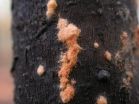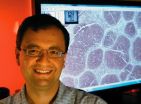CERN announces LHC to run in 2012
2011-02-01
(Press-News.org) Geneva, 31 January 2011. CERN today announced that the LHC will run through to the end of 2012 with a short technical stop at the end of 2011. The beam energy for 2011 will be 3.5 TeV. This decision, taken by CERN management following the annual planning workshop held in Chamonix last week and a report delivered today by the laboratory's machine advisory committee, gives the LHC's experiments a good chance of finding new physics in the next two years, before the LHC goes into a long shutdown to prepare for higher energy running starting 2014.
"If LHC continues to improve in 2011 as it did in 2010, we've got a very exciting year ahead of us," said CERN's Director for Accelerators and Technology, Steve Myers. "The signs are that we should be able to increase the data collection rate by at least a factor of three over the course of this year."
The LHC was previously scheduled to run to the end of 2011 before going into a long technical stop necessary to prepare it for running at its full design energy of 7 TeV per beam. However, the machine's excellent performance in its first full year of operation forced a rethink. Expected performance improvements in 2011 should increase the rate that the experiments can collect data by at least a factor of three compared to 2010. That would lead to enough data being collected this year to bring tantalising hints of new physics, if there is new physics currently within reach of the LHC operating at its current energy. However, to turn those hints into a discovery would require more data than can be delivered in one year, hence the decision to postpone the long shutdown. If there is no new physics in the energy range currently being explored by the LHC, running through 2012 will give the LHC experiments the data needed to fully explore this energy range before moving up to higher energy.
"With the LHC running so well in 2010, and further improvements in performance expected, there's a real chance that exciting new physics may be within our sights by the end of the year," said CERN's Research Director, Sergio Bertolucci. "For example, if nature is kind to us and the lightest supersymmetric particle, or the Higgs boson, is within reach of the LHC's current energy, the data we expect to collect by the end of 2012 will put them within our grasp."
The schedule announced today foresees beams back in the LHC next month, and running through to mid December. There will then be a short technical stop over the year before resuming in early 2012.
INFORMATION:
Contact:
James Gillies, head of communication
+41 22 767 41 01
Press.Office@cern.ch
END
ELSE PRESS RELEASES FROM THIS DATE:
2011-02-01
Chestnut Hill, Mass. (1/31/2011) – Red Bull's red and gold logo can "give you wings" – for better or worse – even if consumers don't know it, according to a new study by two Boston College professors, who found the brand's edgy marketing efforts have sold a heavy dose of attitude to consumers.
Researchers put subjects at the controls of a car racing video game, supplying each with functionally identical racecars, but each car decorated with a different brand logo and color scheme.
Players put in control of the Red Bull car displayed the characteristics often attributed ...
2011-02-01
The more we learn about biology, the closer we get to being able to treat disease – and the more complicated our understanding of disease itself becomes.
A new research finding showing a strong relationship between complex microbial ecologies in human intestines and the common but serious medical condition known as fatty liver illustrates this paradox.
From past genomic studies, we have learned that a mind-boggling multitude of different kinds of benign bacteria inhabit our intestines and that these populations can vary almost infinitely from one human being to the ...
2011-02-01
Boston, MA—Scientists have found that free radicals (unstable molecules that cause the death of cells as the body ages) may also cause the damage in the eyes of patients with Fuchs Endothelial Corneal Dystrophy (FECD), a hereditary disease that is one of the most common reasons for corneal transplants worldwide.
The finding, published in the November 2010 American Journal of Pathology, holds promise for early and preventative treatments for this disease, which impacts nearly four percent of the population over age 60.
"Our discovery is significant, because it gives ...
2011-02-01
Berkeley – In a demonstration of "reverse-ecology," biologists at the University of California, Berkeley, have shown that one can determine an organism's adaptive traits by looking first at its genome and checking for variations across a population.
The study, to be published the week of Jan. 31 in the journal Proceedings of the National Academy of Sciences, offers a powerful new tool in evolutionary genetics research, one that could be used to help monitor the effects of climate change and habitat destruction.
The researchers scanned the genes of 48 different strains ...
2011-02-01
The scientists have now carried out the first full run of experiments that smash protons together at almost the speed of light. When these sub-atomic particles collide at the heart of the CMS detector, the resultant energies and densities are similar to those that were present in the first instants of the Universe, immediately after the Big Bang some 13.7 billion years ago. The unique conditions created by these collisions can lead to the production of new particles that would have existed in those early instants and have since disappeared.
The researchers say they are ...
2011-02-01
New Haven, Conn.—A team of Yale University scientists has synthesized for the first time a chemical compound called lomaiviticin aglycon, leading to the development of a new class of molecules that appear to target and destroy cancer stem cells.
Chemists worldwide have been interested in lomaiviticin's potential anticancer properties since its discovery in 2001. But so far, they have been unable to obtain significant quantities of the compound, which is produced by a rare marine bacterium that cannot be easily coaxed into creating the molecule. For the past decade, different ...
2011-02-01
Researchers at National Jewish Health have discovered a signaling pathway that is crucial to the devastating effects of acute lung injury (ALI). The data, obtained from cells, animals and ALI patients, suggest several potential therapeutic targets. Experimental blockade of one of the targets significantly reduced flooding of the lungs that is the hallmark of ALI.
"Acute lung injury is a devastating disease, with 40 percent mortality and no beneficial therapies," said first author James Finigan, MD, Assistant Professor of Medicine at National Jewish Health. "Our study ...
2011-02-01
It takes songbirds and baseball pitchers thousands of repetitions – a choreography of many muscle movements -- to develop an irresistible trill or a killer slider. Now, scientists have discovered that the male Bengalese finch uses a simple mental computation and an uncanny memory to create its near-perfect mate-catching melody -- a finding that could have implications for rehabilitating people with neuromuscular diseases and injuries.
Young male Bengalese finches practice their boisterous mating song hundreds of times a day, comparing their melody to the songs of their ...
2011-02-01
Researchers have found that a novel form of personalized therapy that genetically engineers a patient's own anti-tumor immune cells to fight tumors could treat metastatic melanoma and metastatic synovial cell sarcoma, representing a potentially new therapeutic approach against these and other cancers.
The technique, called adoptive immunotherapy, works with the body's immune system to fight cancer. Immune cells, called T lymphocytes, are removed, modified, expanded in large numbers, and given back to the patient. In this case, the process entailed genetically engineering ...
2011-02-01
Researchers are leveraging Ohio Supercomputer Center resources to develop computer-assisted diagnosis tools that will provide pathologists grading Follicular Lymphoma samples with quicker, more consistently accurate diagnoses.
"The advent of digital whole-slide scanners in recent years has spurred a revolution in imaging technology for histopathology," according to Metin N. Gurcan, Ph.D., an associate professor of Biomedical Informatics at The Ohio State University Medical Center. "The large multi-gigapixel images produced by these scanners contain a wealth of information ...
LAST 30 PRESS RELEASES:
[Press-News.org] CERN announces LHC to run in 2012


